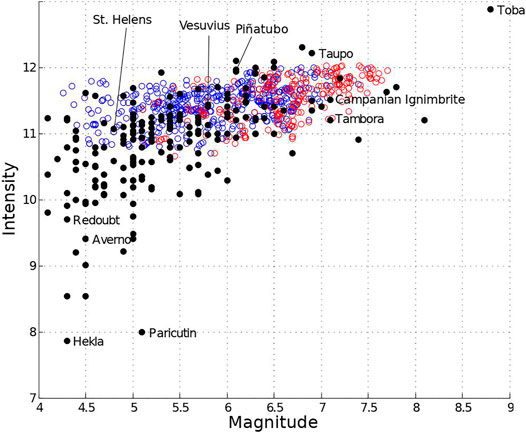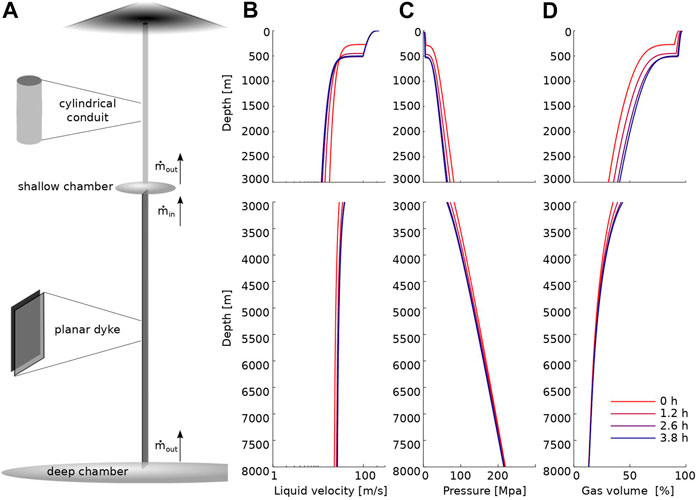Deep Magma Transport Control on the Size and Evolution of Explosive Volcanic Eruptions

Colucci S. and P. Papale 2021.
Frontiers in Earth Science, https://doi.org/10.3389/feart.2021.681083
Abstract
Explosive eruptions are the surface manifestation of dynamics that involve transfer of magma from the underground regions of magma accumulation. Evidence of the involvement of compositionally different magmas from different reservoirs is continuously increasing to countless cases. Yet, models of eruption dynamics consider only the uppermost portion of the plumbing system, neglecting connections to deeper regions of magma storage. Here we show that the extent and efficiency of the interconnections between different magma storage regions largely control the size of the eruptions, their evolution, the causes of their termination, and ultimately their impact on the surrounding environment. Our numerical simulations first reproduce the magnitude-intensity relationship observed for explosive eruptions on Earth and explain the observed variable evolutions of eruption mass flow rates. Because deep magmatic interconnections are largely inaccessible to present-day imaging capabilities, our results motivate the need to better image and characterize extant magma bodies.



Devi effettuare l'accesso per postare un commento.